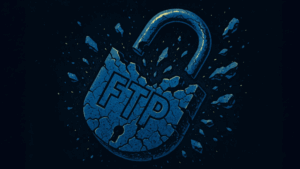
File Transfer Monitoring: Ensuring Secure and Efficient Data Transfers
File transfer monitoring is a critical process that ensures the secure, reliable, and efficient movement of data between systems. Businesses handle vast amounts of digital information daily, and without oversight, file transfers can be vulnerable to failures, unauthorized access, and compliance risks.
File transfer monitoring involves tracking, logging, and analyzing file movements in real time, allowing organizations to detect and resolve issues proactively. Companies that lack visibility into their data transfers risk inefficiencies, security breaches, and operational bottlenecks.
Key Benefits of File Transfer Monitoring:
- Enhanced Security — Identify and prevent unauthorized access and data breaches.
- Operational Efficiency — Be alerted to and resolve transfer failures quickly.
- Compliance & Audit Readiness — Maintain logs for regulatory compliance.
Signiant provides enterprise-grade monitoring tools that deliver comprehensive oversight and control over file transfers.
Why Businesses Need File Transfer Monitoring
Unmonitored file transfers present serious risks, including data corruption, compliance violations, and costly downtime. Here’s why businesses need robust monitoring solutions:
Monitoring solutions offer centralized control, scalability, and policy-based management, making it easier to oversee file transfers across large-scale deployments.
Key Features of an Effective File Transfer Monitoring Tool
Choosing the right file transfer monitoring tool requires evaluating key features that ensure security, automation, and efficiency.
Essentials Features
- Real-time Tracking & Logging — Maintain a detailed record of all transfers.
- Automated Alerts & Notifications — Get instant alerts for failed, unauthorized, or delayed transfers.
- Role-Based Access Controls — Secure sensitive data with user permissions.
- Seamless Integration — Connect with cloud storage, on-premises systems, and hybrid environments.
- Customizable Policies & Rules — Define automation workflows and ensure compliance.
Signiant’s solutions, including Jet and Media Shuttle, provide businesses with a comprehensive monitoring dashboard to track file movements end-to-end.
How to Implement File Transfer Monitoring in Your Business
By using the Signiant Platform’s unified file transfer monitoring features, businesses can automate oversight and ensure seamless operations across their digital ecosystem.
Common Challenges in File Transfer Monitoring & Solutions
| Challenge | Solution |
| High Data Traffic Across Different Storage Locations | Use cloud-based monitoring for scalability. |
| Compliance Complexity | Enable automated audit logs for easy reporting. |
| Security Risks | Implement role-based access and encryption. |
| Monitoring Failures | Set up real-time alerts to detect errors. |
Future Trends in File Transfer Monitoring
As businesses continue to adopt cloud-based infrastructure, file transfer monitoring is evolving. Emerging trends include:
- AI-Powered Monitoring — Predictive analytics to detect anomalies before they cause failures.
- Blockchain-Based Audit Logs — Tamper-proof tracking for enhanced compliance.
- Zero-Trust Security Models — Strict access controls to prevent unauthorized file access.
With these advancements, businesses will gain more intelligent, secure, and automated monitoring solutions for managing their digital file transfers.
Choosing the Right File Transfer Monitoring Solution
Finding the right monitoring tool requires careful evaluation. Compare solutions based on:
Signiant provides easy-to-use, enterprise-grade file transfer monitoring with a focus on security, automation, and visibility, making it an ideal choice for modern businesses.
Effective file transfer monitoring ensures that businesses can securely manage and track data transfers, maintain compliance, and automate alerts for failures. Investing in advanced monitoring solutions allows companies to optimize workflows, protect sensitive data, and avoid costly downtime.
Gain complete visibility and control over your file transfers.
Talk to a Signiant product specialist to see how our enterprise-grade monitoring tools deliver real-time insights and granular control.





